Abstract Although the "Dragon Elephant Battle" has been said for so many years, in the face of the economic aggregate and growth rate has long been higher than its own China, many Indians' inner thoughts may be like the movie "Wrestling!" A line in Dad -&nb
Although the "Dragon Elephant Battle" has been said for so many years, in the face of the economic aggregate and growth rate has long been higher than its own China, many Indians' inner thoughts may be like the movie "Wrestling!" A line in Dad - 
But is this really true? Let's take a closer look at how Harvard says.
Indian netizen: Harvard is right, Modi, you are awesome. Every time I noticed, the Harvard International Development Center predicted in the report released on June 28 that by 2025, India’s GDP growth rate will reach 7.72. %, China's GDP growth rate slowed to 4.41%.
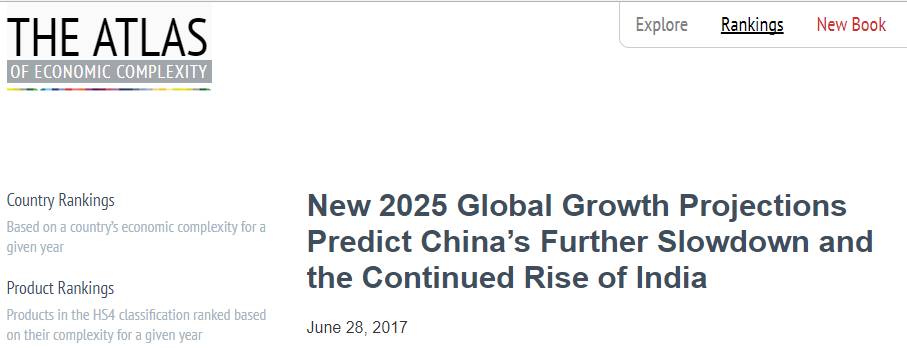
What is Economic Complexity? According to the report, “Economic complexity describes the diversity and complexity of productivity embodied in national exports, and the ease with which these capabilities can be further diversified.†If a country produces the technology needed to modernize and refine its products. Knowledge increases and its economic growth rate may exceed that of other countries.
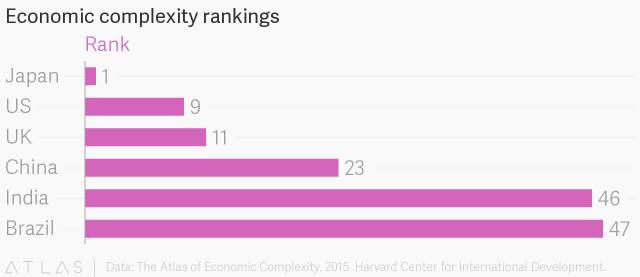
â–² Economic complexity ranking
The report believes that although China's economic complexity ranks higher than India, it has fallen four places to 23 places worldwide. While India is located at 46th, it is more diverse in terms of politics, institutions, geography and population, which gives it more room for production diversification. Researchers believe that the rapid growth of the Chinese economy over the past decade has narrowed the gap between its complexity and income, which is a sign of a slowdown in growth. Growth forecasts show that China still exceeds the world average, but its growth rate is 4.4% per year over the next decade, which is significant compared to the current slowdown.
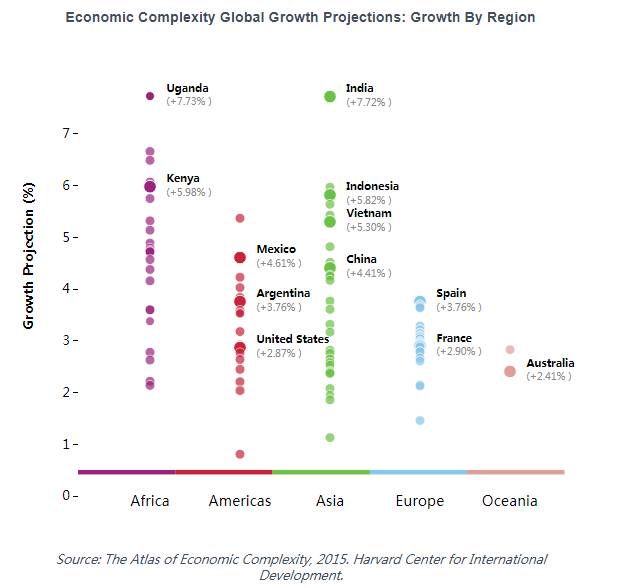
â–² economic complexity global growth forecast (by region)
The report pointed out that India's potential for future development is mainly due to its potential for diversified production and export. Today India is working hard to diversify its exports, including more complex industries such as chemicals, automobiles and electronics. Ricardo Hausmann, a professor at Harvard University's Kennedy School and director of the Center for International Development, said that today's major oil economies are mired in a single natural resource, "but in terms of production diversification and complexity, India, Indonesia and Vietnam have already Accumulated new potential and will achieve greater growth in the next few years."
The report also predicts that by 2025, Uganda is the only country with growth that may be faster than India, with a projected GDP growth rate of 7.73%.
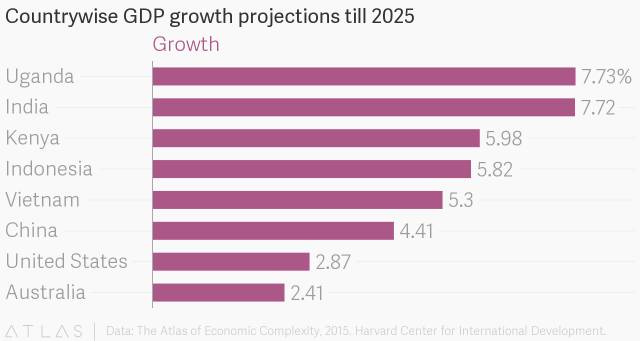
â–² National GDP growth forecast (to 2025)
Xiao Bian noted that after the report was published, the media such as the times of India reported it recently, and some of the articles used were somewhat exaggerated. For example, the following title: "Harvard Research predicts China's economic growth. There will be a dramatic fall, India will be an impressive rise... 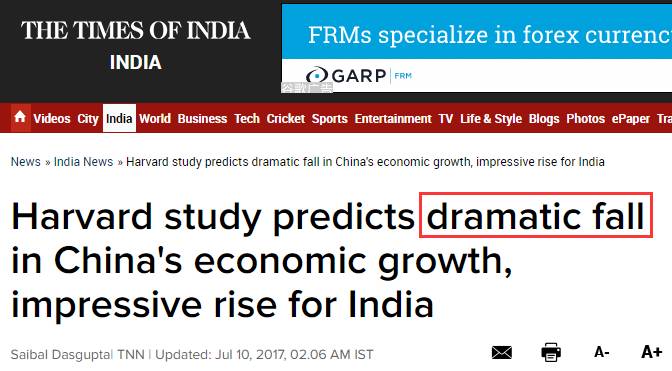
"If the current government does two more, India will undoubtedly become the world's number one country."



"We Indians want to stop trading with them. Buying Chinese goods means making them economically strong."
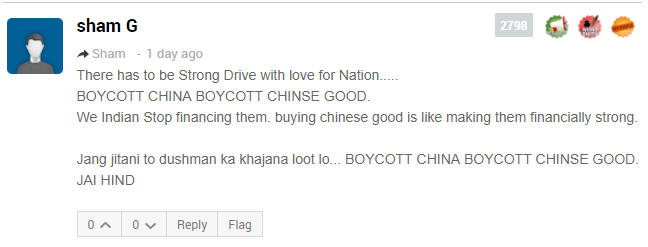
"China's 4% growth is 440 billion US dollars, India's 7.5% is only 160 billion. It takes a long time to fill this ditch. It is said that it will go to 2075... I wish the people who lived at that time good luck. ."


In 2003, Huang Yasheng of Harvard Business School and Tarren Kana of the Massachusetts Institute of Technology published in the US Foreign Policy that India will eventually surpass China because the Chinese economy relies on fickle and unreliable foreign investment and technology. Driven, while India is driven primarily by domestic savings and entrepreneurship.
When China’s economic growth slows and India accelerates, the predictions of Huang Yasheng and Cana may come true. Harvard University's research report follows this logic.
But in fact, according to the website of the Ministry of Commerce, as early as the beginning of 2015, the "Foreign Policy" website published an article "Beat China, First to Be China", saying that India's economic growth surpasses China's premise, is to follow China's economic growth model. .

On March 7 this year, India’s Economic Times also published an article comparing with China, entitled “China’s Five Reasons for Being Sophomore to Indiaâ€.
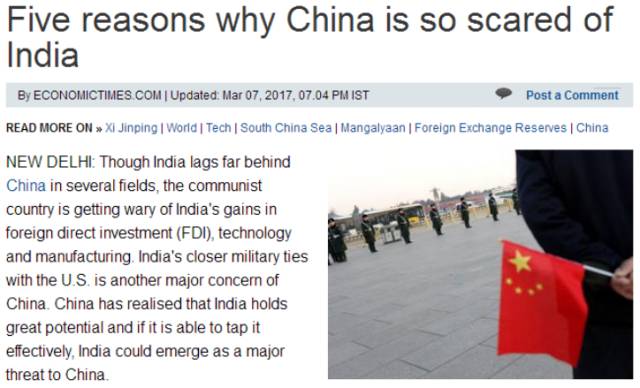
â–² report screenshot
However, the article published on the Foreign Policy website earlier than the Forbes report pointed out that even if India’s economic growth rate really exceeds China, it is not surprising from the perspective of economic principles, because India’s base is low and growth according to the marginal diminishing effect. Speed ​​should be faster than China, which is richer than him. Previously, every time I edited the World Bank data, I found that India’s GDP in 2015 was 2.095 trillion US dollars, while China’s GDP was 11.008 trillion US dollars, which was a big lead over India.

â–²GDP data (red line for China, green line for India)
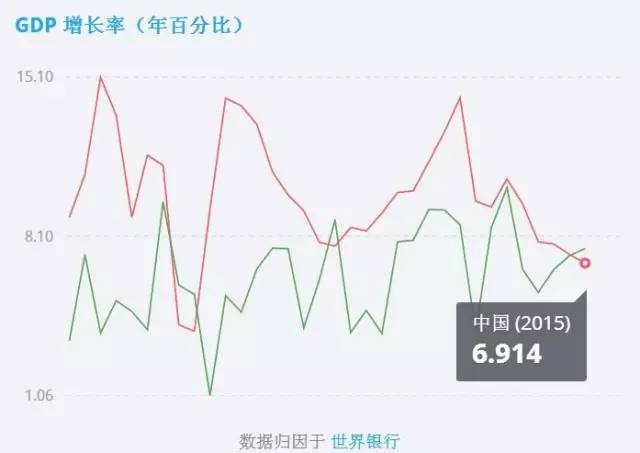
â–² GDP growth rate (red line for China, green line for India)
The above article also pointed out that India's prediction of surpassing China does not reflect the fact that China has maintained rapid growth while achieving very high GDP, and India has not realized its growth potential. If India wants to surpass China, it must first make itself more like China. This is the opposite of Huang and Kana’s argument.
Prime Minister Modi is indeed trying to concentrate on building first-rate infrastructure and promoting large labor-intensive manufacturing projects that require foreign investment and technology.
If it can do all of this and take advantage of its population advantage of young people, India is likely to surpass China.
What do you think?
Click Floor,Mothproof Fireproof Durable,Indoor Click Vinyl,Easy Indoor Click Vinyl
DONGYANG MAOSHENG PLASTIC CO.,LTD , https://www.maoshengflooring.com
